QuestionHi there i have 3 horsefield tortoises one is slightly bigger and older than the other two. I bought them off my friend as a gift for my children for xmas and up until the past 2wk everything has been fine except the little one would often bite the others at feeding time as my friend had told me to feed them seperate in that case. These past 2 wks though the big one has started racing around the vivarium going mad trying to climb the walls and biting the shells of the others if they get in its way which is very unusual for this one because this was always the most pleasant out of the 3. They live in a 4ft vivarium and have a 100watt heat lamp and a 15watt UVB exo terra repti glo lamp which gives off all the necessary calcium and vitamins needed. They eat dry pelleted food what you moisten first.The temperature in the centre of the vivarium is 90 degrees as thats where the thermometer is, maybe should have one at either end?? its behaviour is really strange, hope i have given you enough information thankyou.
AnswerHi Carrie,
I suspect the big tortoise is a female and may be gravid and ready to lay. Females will become very restless and often aggressive towards other tortoises when they need to lay. She will need a nest box with a soil substrate (you can substitute coir/playsand in a 50/50 mix, a little damp) at least as deep as she is long. If she does lay, visit http://russiantortoise.org/breeding.htm for information on incubation.
I would suggest you make some changes to the way you're keeping your tortoises. They shouldn't be in a viv, and in any case a 4 ft. viv is much too small for three tortoises--it's really only adequate for one. I would try to replace that Repti-glo bulb, since the level of UVB it gives off are pretty minimal, and they also need to be replaced every six months. If you can build an outdoor pen for the warmer months, that would be ideal. You also need to get rid of the pellets and get them on a better diet. Pellets are sold for tortoises, but they're really not healthy for them. A natural greens diet would be much better. I'm going to give you some basic care information below, and then if you have questions you can post back. Thank you!
Here's the basic information you need to know:
Tortoises don't do well in tanks. They need good air circulation and the glass walls are a problem because they'll try to go through them. The enclosure should be something large and open. For a single tortoise, I'd recommend at least 3' x 4'. You can build a tortoise table, use an old bookcase turned on its back, or something else, but give your tortoise as much room as you can manage. If you have a yard, you can build an outside pen for the warmer months so your tortoise can get natural sunlight and fresh air.
Substrate--the substrate I use is a half and half mix of coir (bed-a-beast/ecoearth) and playsand, kept slightly damp at all times. This holds humidity and allows the tortoise to burrow. Using a substrate with some humidity duplicates the conditions in their burrows in the wild, where they spend a majority of their time. The heat lamp is extremely drying, so the humidity is important. You'll need to check the substrate every few days (stick your finger down into it) and add water as needed. Make sure there's a shallow dish of water large enough for the tortoise to get into completely. Don't use calcisand, reptile carpet, crushed walnut shells, or anything else a pet store tries to sell you.
Basking/UVB lights: The only bulb I recommend is either the T-Rex Active UVheat bulb or the ZooMed Powersun, which has heat and UVB in one. Excellent bulb and very durable. You can get them at www.carolinapetsupply.com. You need a basking temp of 90-95 degrees and a cooler area of 70-75 degrees so your tortoise can regulate its temperature.
Diet: Leafy greens, no veggies, no fruit, no pellets. Turnip, mustard, dandelion, collards, endive, raddichio, spring mix, etc. are all good, along with weeds such as sow thistle, chicory, chickweed, mallow, plantain, clover, hawkbit, and grape/mulberry leaves, hibiscus, nasturtium, viola, rose petals, abutilon, etc. Put a cuttlebone in the enclosure so the tortoise can self-regulate calcium intake.
Here's the best website for RT information (you can also join the Yahoo RT group by clicking on the link on the front page): www.russiantortoise.org.

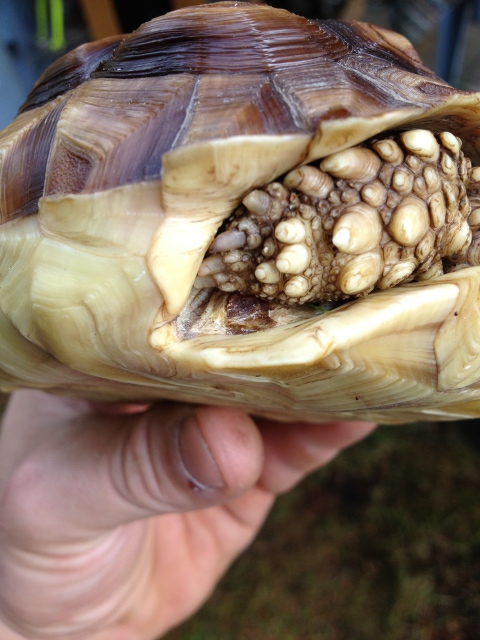 sulcata
Question
scab scab
Hello i have aquired a
sulcata
Question
scab scab
Hello i have aquired a
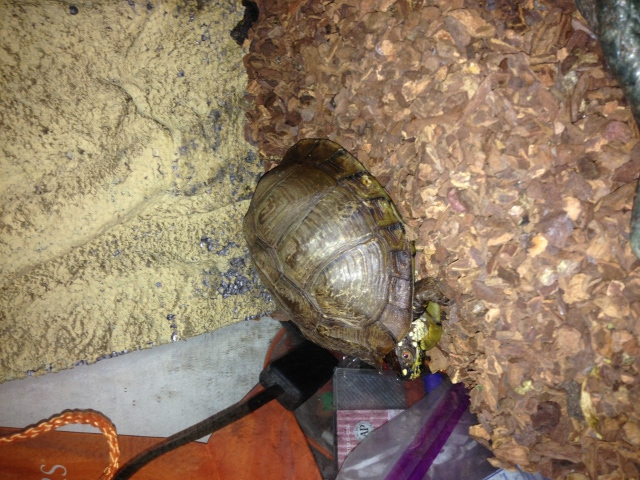 Turtle food
QuestionQUESTION: I have had my turtle for 5-7 years wh
Turtle food
QuestionQUESTION: I have had my turtle for 5-7 years wh
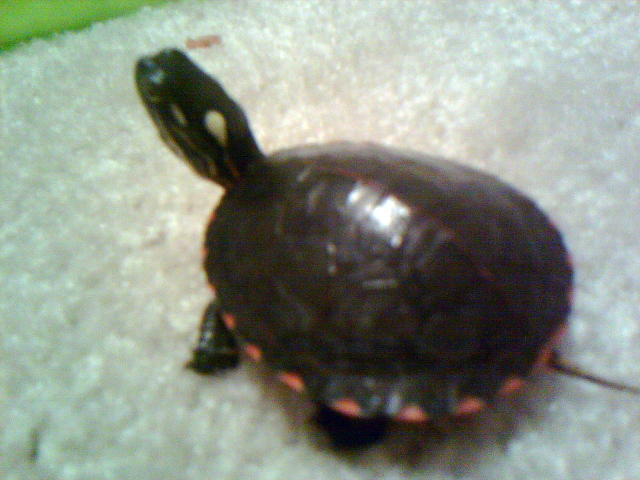 Could my turtle have an eye infection?
QuestionQUESTION: Me and my friend found this little tu
Could my turtle have an eye infection?
QuestionQUESTION: Me and my friend found this little tu
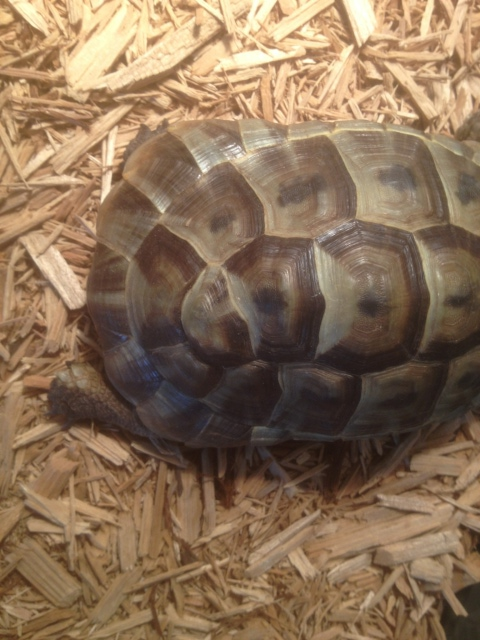 Greek tortoise shell question
Question
Tortoise shell 1 Tortoise shell 2
Greek tortoise shell question
Question
Tortoise shell 1 Tortoise shell 2
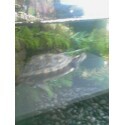 Golden spots on shell
QuestionQUESTION: I have 2 red ear sliders & 2 painted
Golden spots on shell
QuestionQUESTION: I have 2 red ear sliders & 2 painted